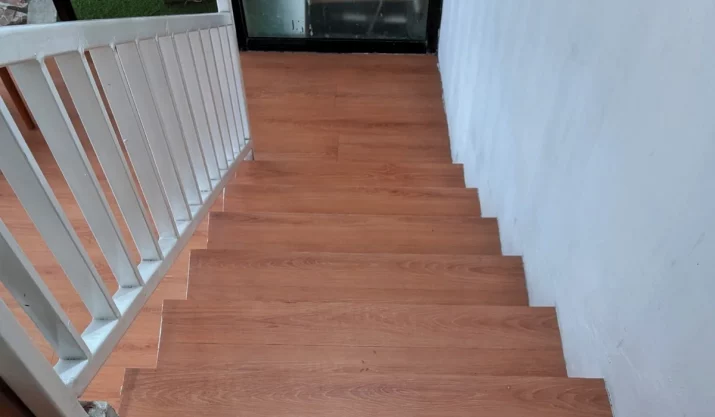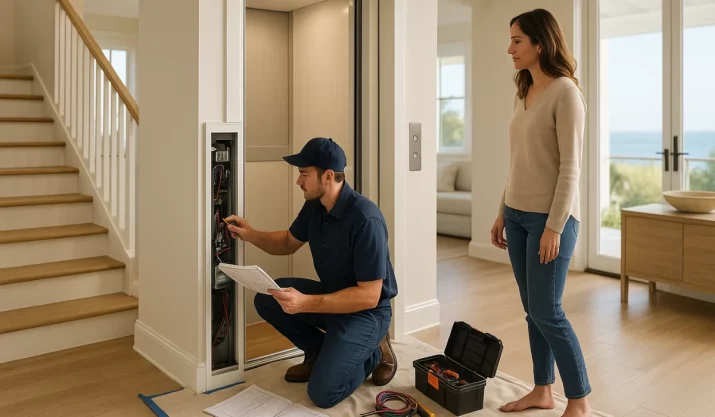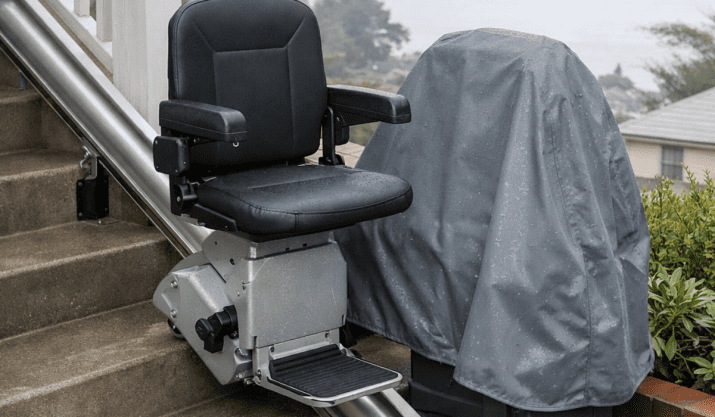Scooter Lifts vs. Vertical Platform Lifts: What’s Best for You?
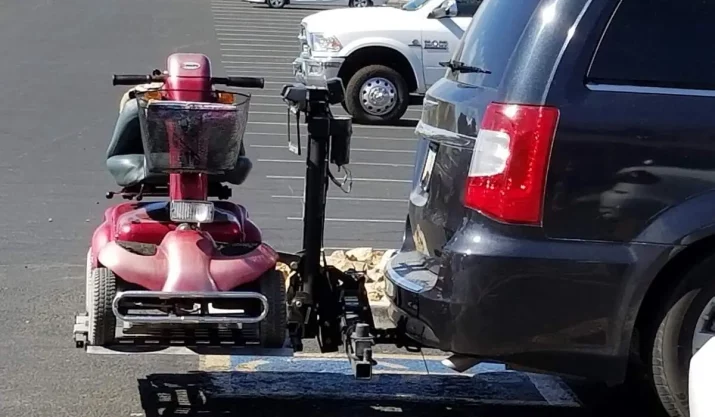
Table of Contents
If you or a loved one relies on a mobility device, such as a scooter or power chair, getting in and out of your home or transporting your equipment can be one of the biggest day-to-day challenges. Thankfully, there are accessibility solutions designed to make life easier. Two of the most common types of lift systems for people with disabilities are scooter lifts and vertical platform lifts (VPLs).
At first glance, they seem similar. But they serve very different purposes depending on your mobility needs, home layout, and lifestyle.
In this guide, we’ll compare scooter lifts and VPLs, walk through key decision-making steps, and help you choose the best option for improving home accessibility in California.
Key Takeaways
- A scooter lift is best suited for vehicle travel, while a vertical platform lift facilitates access at home.
- Daily habits, the space around your home, and the size of your mobility device all shape which lift will serve you better.
- A vertical platform lift offers a higher lifting height, greater weight capacity, and stronger safety features than a scooter lift.
- California Mobility provides local support, expert installation, and free quotes for families facing mobility challenges in California homes.
Comparing scooter lifts and vertical platform lifts
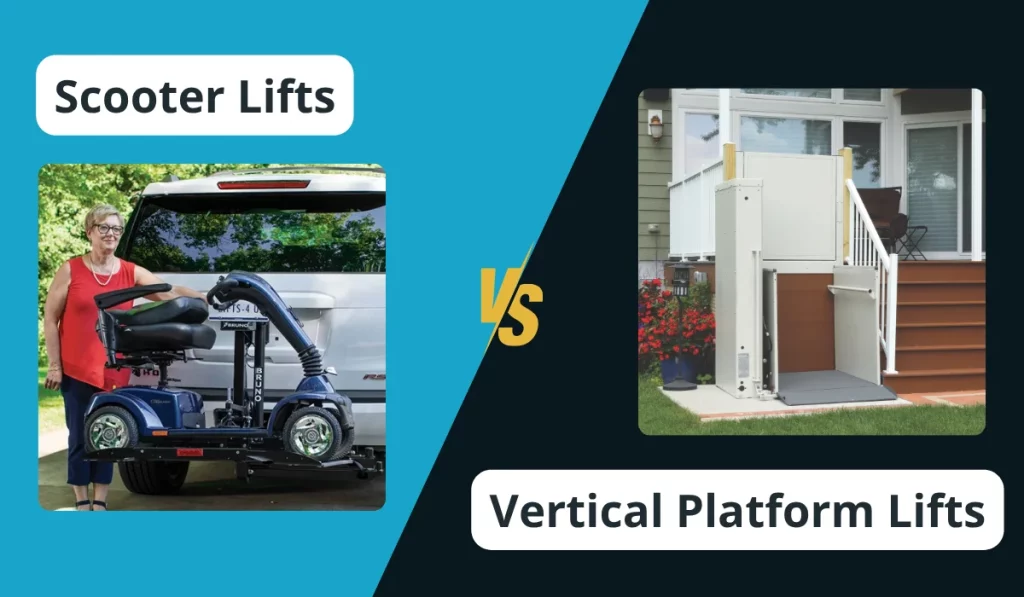
Let’s break down the features of scooter lifts and vertical platform lifts to help you see how they differ.
| Features | Scooter Lift | Vertical Platform Lift |
|---|---|---|
| Purpose | Load/unload scooters into vehicles | Elevate mobility devices between two levels |
| Best For | On-the-go use with vehicles | Permanent home or commercial settings |
| Type of Lift | Vehicle-mounted or hitch-based | Self-contained vertical lift system |
| Mobility Devices Supported | Scooters, power chairs | Wheelchair users, scooters, walkers, power chairs |
| Weight Capacity | ~300–350 lbs | 600–750+ lbs |
| Lifting Height | 2–3 feet | Up to 14 feet |
| Durability | Built for transport | Durable, weather-resistant construction |
How to Decide What’s Best for Your Needs
Making the correct choice between a scooter lift and a VPL starts with understanding how each system fits into your daily life.
Here are some focused steps to help guide you:
Consider How You Use Your Mobility Device Day to Day
If your scooter or power chair mainly helps you get around town, whether that’s running errands in San Jose or heading to appointments in Sacramento, a scooter lift may be all you need. These are designed to lift mobility aids into a vehicle, helping you maintain freedom without depending on others.
However, if you use your mobility device throughout the day to move around your home or outdoor property, a wheelchair lift, such as a VPL, can remove frustrating barriers like entryway stairs or garage steps. It’s beneficial if you’re living with mobility issues that affect your independence at home.
Look At Your Home’s Layout and Available Space
Every California home is different.
Some have wide driveways and low thresholds. Others, especially in areas like San Francisco or hillside suburbs, come with narrow entry points, limited space, or several outdoor steps.
If you don’t have the room for a wheelchair ramp, or the slope would be too steep to meet safety standards, VPLs can be a space-saving solution. They are often installed next to porches or garages where stairs can be replaced with a stable porch lift.
If space is extremely tight or access is only needed between floors inside, consider residential elevators or inclined platform lifts, which travel along staircases.
Assess the Weight and Platform Needs of Your Mobility Device
Different mobility aids require different lift capabilities.
A lightweight scooter might be fine with a vehicle-mounted lift. But if you’re using a larger power chair or travel with a caregiver, you’ll need a lift with higher weight capacity and a larger platform.
VPLs come in a variety of platform sizes, some of which can even accommodate more than one person, offering flexibility for those who need assistance or transport multiple items.
Knowing the total travel distance (vertical height) between landings also helps ensure you choose the right model.
Think About Long-Term Value and Safety
For those managing long-term disabilities or progressive health conditions, investing in a lift system is about preserving independence and dignity.
VPLs are designed with a complete set of safety features, including non-skid surfaces, locking gates, and emergency stop controls. They’re also built to meet ADA and residential safety standards, making them a wise choice if you plan to age in place.
While scooter lifts are highly cost-effective for travel, they may not provide sufficient support for individuals who face daily mobility challenges within the home.
Choosing a durable, weather-resistant VPL could save money in the long run by reducing the need for additional equipment, such as extended ramp systems or repeated home modifications.
Need Help Deciding? Let’s Talk Accessibility Options That Work for You
If you’re unsure whether a scooter lift or vertical platform lift is right for your home, California Mobility is here to help. We specialize in personalized accessibility solutions for people with limited mobility, and we know how to match the right lift system to your needs, whether that’s a compact scooter lift or a robust porch or wheelchair lift.
We offer a free quote and home assessment to guide you through your options and demonstrate how you can enhance access and safety without requiring a complete overhaul of your entire home.
Whether you’re in Los Angeles, the Bay Area, or a smaller town in between, our team brings experience, transparency, and local insight.
Call us now and let us help you take the next step toward safer, more independent living.




